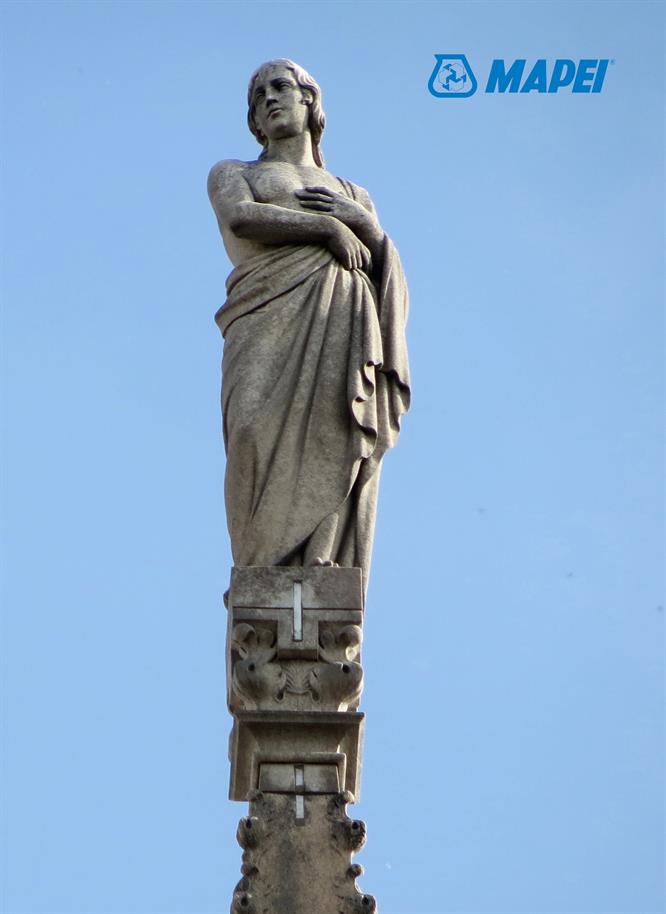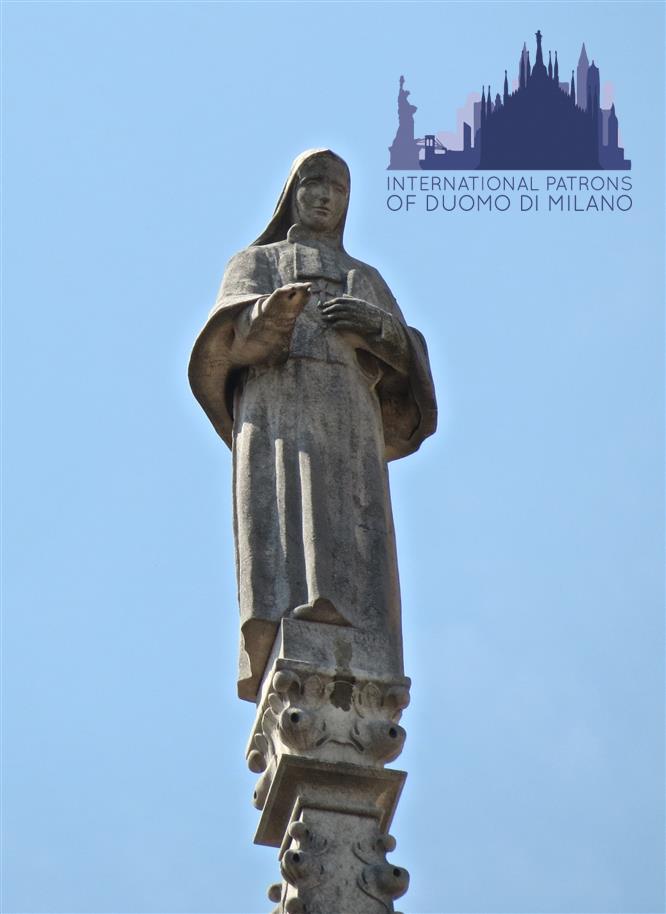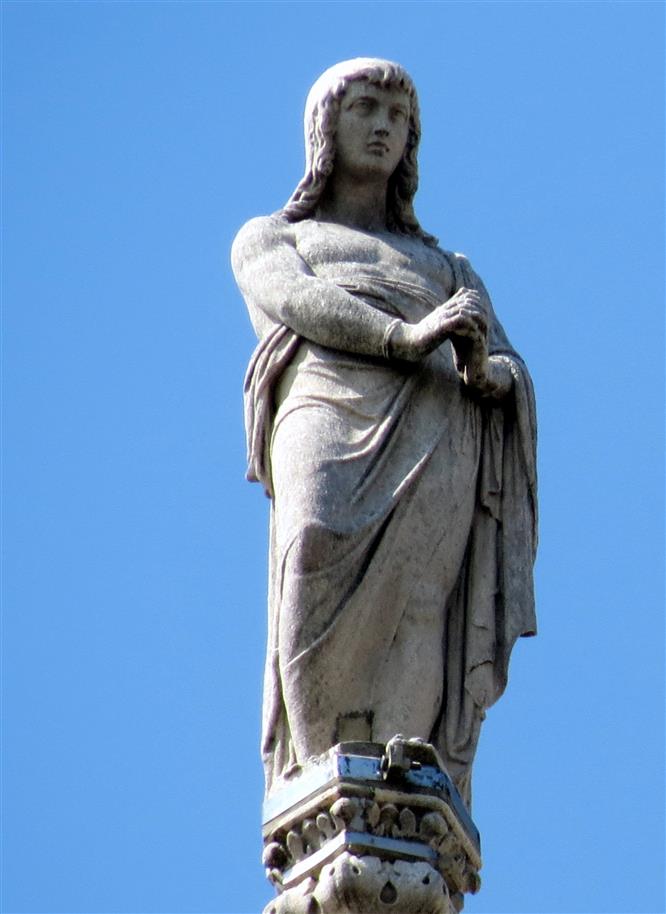This statue, standing on the north transept of the Cathedral, shows a man deep in thought. Without any attributes, it is difficult to understand which Cyprian of Christian tradition he may be. Perhaps he is the Calabrian saint and physician, born in Reggio sometime between 1100 and 1120. While still young, however, after practicing medicine for only a few years, he abandoned the profession to enter the Greek abbey of the Very Holy Saviour of Calomeno, in the archdiocese of Reggio. Up until 1011, the year of the founding of the Abbey of Cava dei Tirreni, near Salerno, southern Italy was Christian but followed the Greek rite. This distinctive past is easily visible in the splendid Byzantine churches, decorated with golden mosaics and depictions of Christ Pantocrator, for example those in Monreale and Lecce. When the Abbey was founded, the first monks following the Roman rite arrived; they had been trained at Cluny in France, and would gradually replace not only the Greek rite, but also the Greek language, which was still spoken in Calabria, eastern Sicily and the Salento area. Cyprian devoted himself to the harsh life of asceticism, made up of hardship, mortifications and a frugal diet. Years of sacrifice rewarded him when he become the Abbot of Calamizzi, where, at his own expense, he restored and decorated the church, as well as striving to serve the local population, using his medical knowledge and healing people not only from the area, but also the pilgrims arriving from Calabria and Sicily to ask his help. He died on 20th November 1190, when southern Italy, after driving away the Byzantines, Longobards and Arabs, fell under the domination of the Normans, giving rise to a reign that would last, in an incredibly uniform way, up to the Unity of Italy. Cyprian was born and died at a time that was crucial for southern Italy. By changing its religion and language, this area of Italy officially entered the western sphere of influence, leaving Constantinople. Soon the people of the North, like the Longobards, Normans and Swabians would follow on after each other on the various thrones, adding different accents and traditions, creating the various layers of a magmatic and lively culture. Even today, when travelling around the rural areas of inland Calabria and Salento, it is still possible to come across older people who speak “griko”, all that remains of the Greek of Byzantine Italy. There are echoes in this language of the Spartans of Taranto, of the Corinthians of Syracuse, of the Achaeans of Sibari, and of the Chalcidians of Cuma and Reggio. There were also the comforting words of Cyprian, his work of assistance. Under the changing powers and cultures, Cyprian was a saint of transition, a link for the least important, beyond any language barrier.
ST. CYPRIAN MARTYR
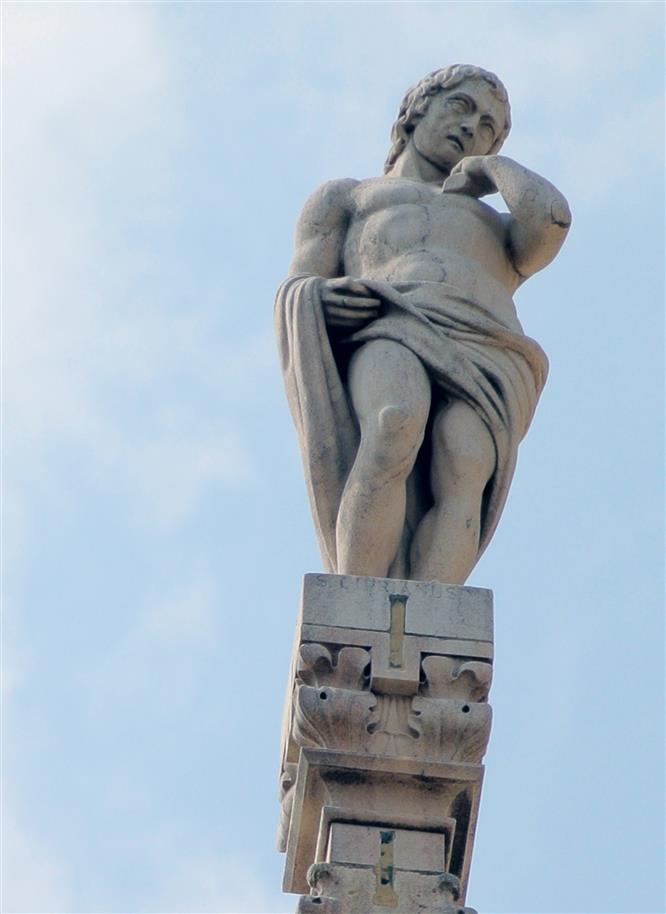
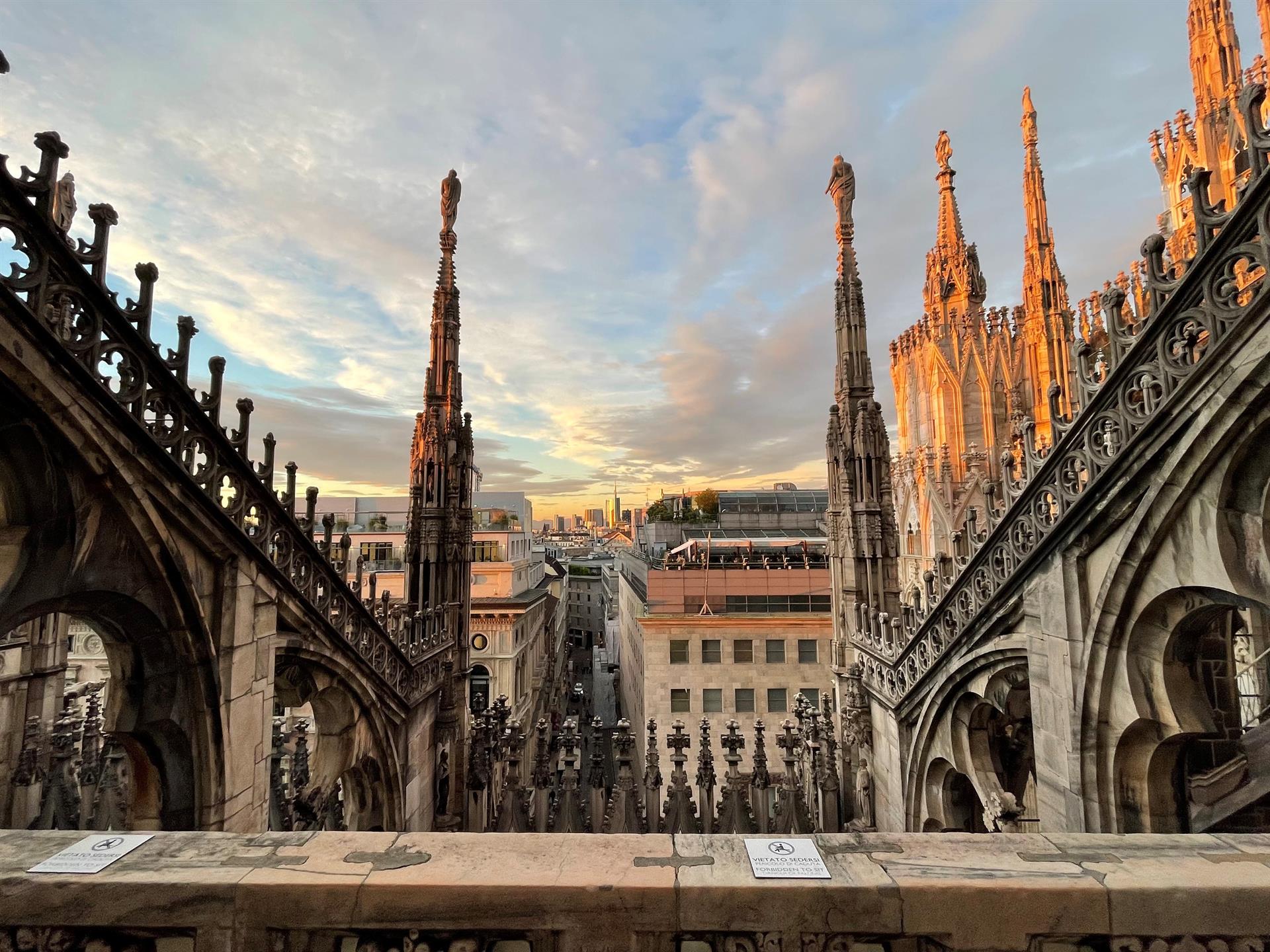
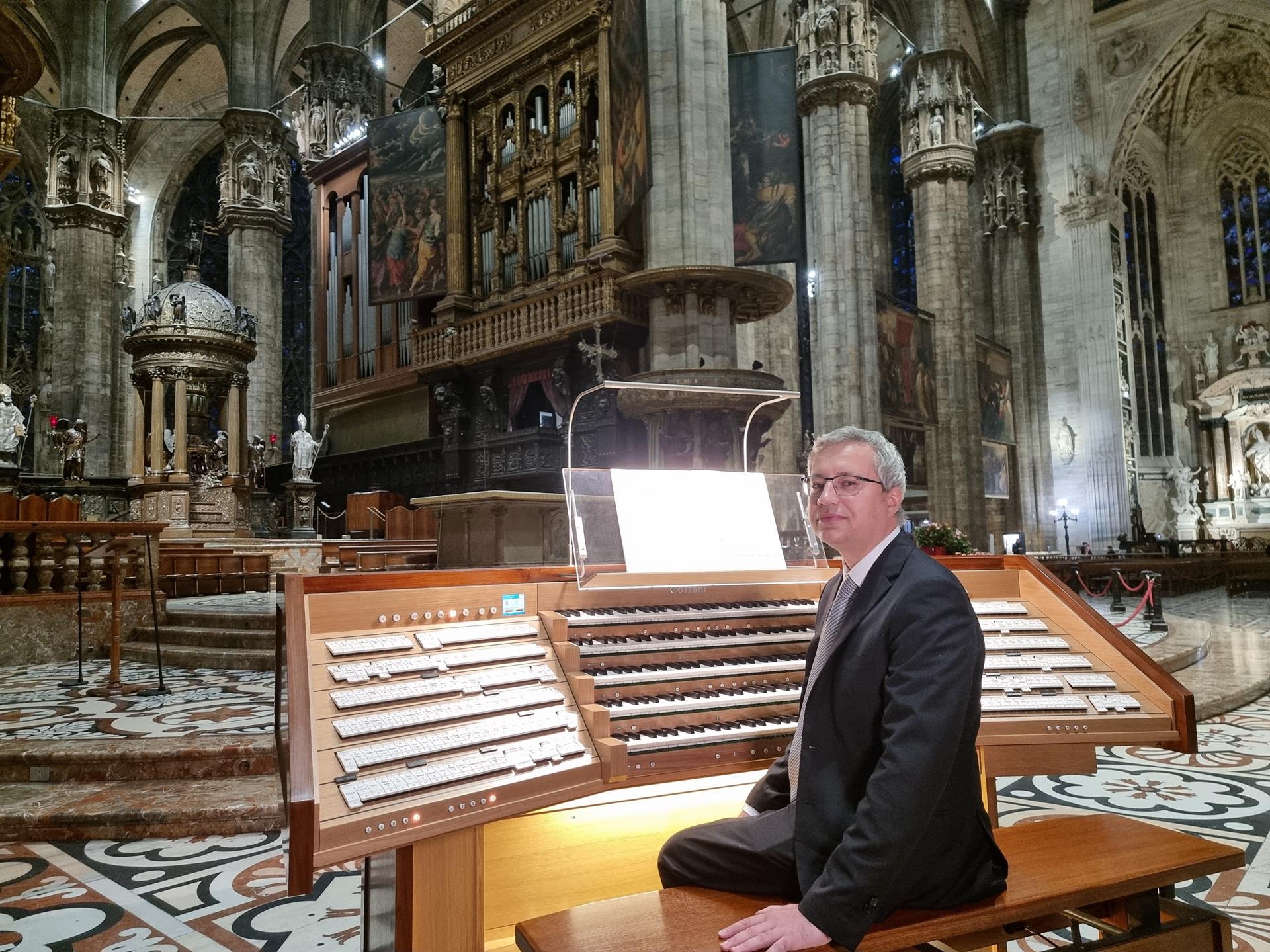
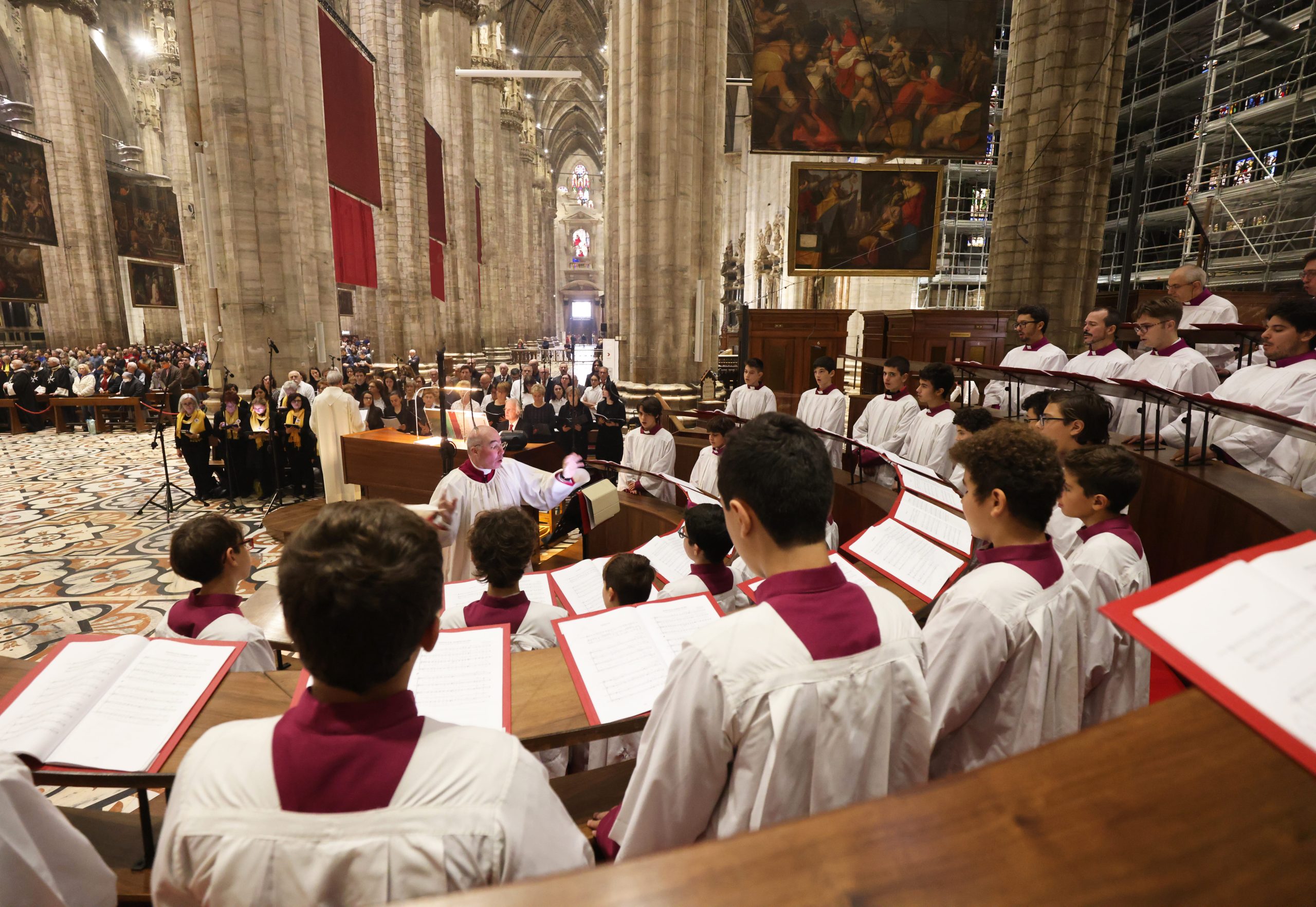
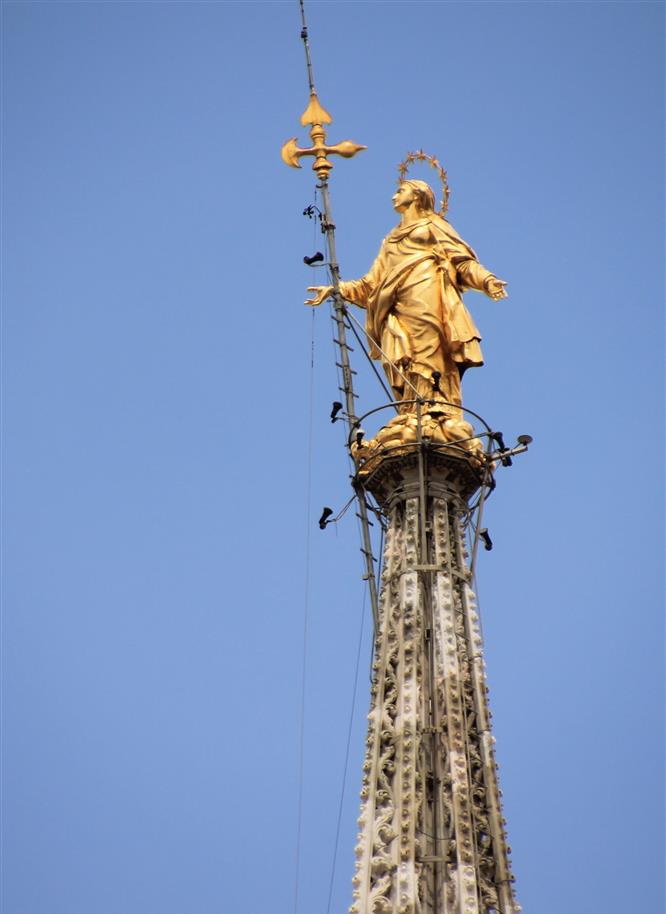
 Tiburio
Tiburio